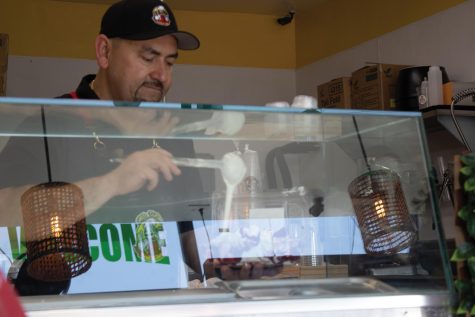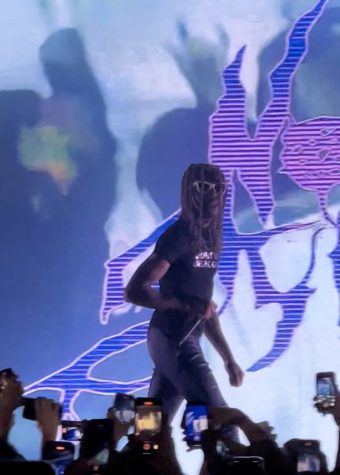Mexican American and Chicano Movies of the First-Half of the 1990s: From “American Me” to “Mi Vida Loca”
In the 1990s, Mexican American movies captured a far more comprehensive cultural experience than movies of the 1980s.
In the decade after movies like “Zoot Suit,” “Stand and Deliver,” and “Born in East L.A.,” Mexican American and Chicano films continued to touch on similar themes. But they also told more complex stories at times.
Two of the era’s most recognized Mexican American movies, “American Me” and “Blood In Blood Out,” were released between 1992 and 1993. But while “American Me” and “Blood In Blood Out” stay in East Los Angeles, the lesser-known “Mi Vida Loca” captures cholo culture in Echo Park from a female perspective.
All three movies explore Mexican American and Latinx gang culture in the 1970s and 1990s. However, they all dive even deeper into the subculture than previous Mexican American movies had.
“American Me” (1992)
Edward James Olmos released his dictatorial debut film “American Me” in 1992. In “American Me,” Olmos stars as the main character Montoya Santana. The majority of the film is set in prison. It follows Santana’s rise and fall as a gang leader.
Over a decade earlier, in 1981, Olmos played the narrator, El Pachuco, in the musical “Zoot Suit.” The first Mexican American film of the 1980s. “American Me” even features the Zoot Suit Riots at the beginning of the movie; the real-life event also appears in “Zoot Suit.”
Besides Olmos, who appears in several more 1990s Mexican American movies, “American Me” is also the first to feature Jacob Vargas. Olmos, Danny Trejo, Seidy López, and Lupe Ontiveros are the only actors to appear in three 1990s Mexican American movies. But Vargas is the only one to appear in four movies through the decade.
Still, Olmos’ “American Me” wasn’t entirely the first Mexican American movie that came out in the decade. However, the movie was one of the first of the 1990s.
The movie “El Mariachi” came out just over two weeks before “American Me” in Feb. 1992. But, “El Mariachi” isn’t exactly a Mexican American movie, as the title hints. Although it is set in Mexico it doesn’t focus on the Mexican American experience. In addition, the star of the movie, Antonio Banderas, is Spanish.
“Blood In Blood Out” and “Mi Vida Loca” (1993)
In April 1993, “Blood In Blood Out” came out. The movie is a lengthy watch at three hours. “Blood In Blood Out” touches on several similar themes as “American Me.”
“Blood In Blood Out” explores the cholo culture of the 1970s and early 1980s, inside and outside of prison. The movie also spends a lot of time exploring the family experience. The Mexican American nuclear family is further explored later in the decade with “My Family” in 1995.
But that same year in 1993, “Mi Vida Loca” was released. The movie came out just three months after “Blood In Blood Out” but didn’t get a national US release until 1994. Yet, the film is drastically different from the previous two.
“Mi Vida Loca” is the only Mexican American movie of the 1980s and 1990s that almost solely follows the female experience in Los Angeles. The main characters are friends, and esas, Sad Girl (Angel Aviles) and Mousie (Seidy López). Salma Hayek also makes a few brief appearances as Gata.
More familiar actors appear in “Mi Vida Loca” like Jesse Borrego as El Duran and Trejo as Frank. Borrego and Trejo also appear in “Blood In Blood Out.” In addition, Vargas appears as Ernesto in “Mi Vida Loca.” Others like López appear in later Mexican American films like “Selena.”
“Mi Vida Loca” is probably the least known of all three movies. However, the movie made over $3 million at the box office. It conjures the question, is the Mexican American female focus of the movie something that has affected its appeal? Is it something that has resulted in the public ignoring or forgetting about the movie since its release 29 years ago?
Mexican American and Chicano Movies of the First-Half of the 1990s
Both movies, “Blood In Blood Out” and “Mi Vida Loca” are currently available on Youtube. The quality of the movie isn’t great, but it adds to the visceral quality of the films and the authenticity of the stories they tell.
Regardless, all three early 1990s Mexican American movies, “American Me,” “Blood In Blood Out,” and “Mi Vida Loca,” give off a sort of nostalgic and simultaneously tragic feeling when watching back three decades later. They are all heavy stories with heavy implications and endings.
Jeffrey Barragan is a first-generation Chicano from the Greater Los Angeles area.







